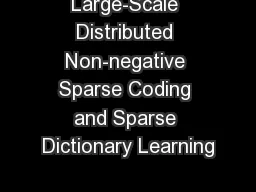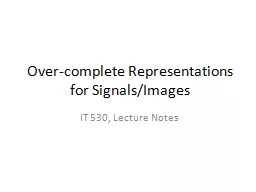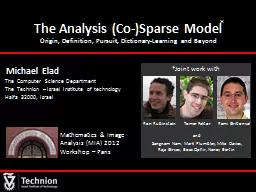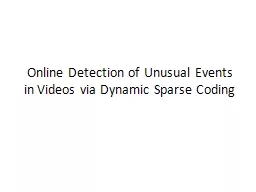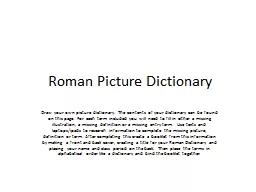PPT-Large-Scale Distributed Non-negative Sparse Coding and Sparse Dictionary Learning
Author : danika-pritchard | Published Date : 2018-03-17
Author Vikas Sindhwani and Amol Ghoting Presenter Jinze Li Problem Introduction we are given a collection of N data points or signals in a highdimensional space
Presentation Embed Code
Download Presentation
Download Presentation The PPT/PDF document "Large-Scale Distributed Non-negative Spa..." is the property of its rightful owner. Permission is granted to download and print the materials on this website for personal, non-commercial use only, and to display it on your personal computer provided you do not modify the materials and that you retain all copyright notices contained in the materials. By downloading content from our website, you accept the terms of this agreement.
Large-Scale Distributed Non-negative Sparse Coding and Sparse Dictionary Learning: Transcript
Download Rules Of Document
"Large-Scale Distributed Non-negative Sparse Coding and Sparse Dictionary Learning"The content belongs to its owner. You may download and print it for personal use, without modification, and keep all copyright notices. By downloading, you agree to these terms.
Related Documents

